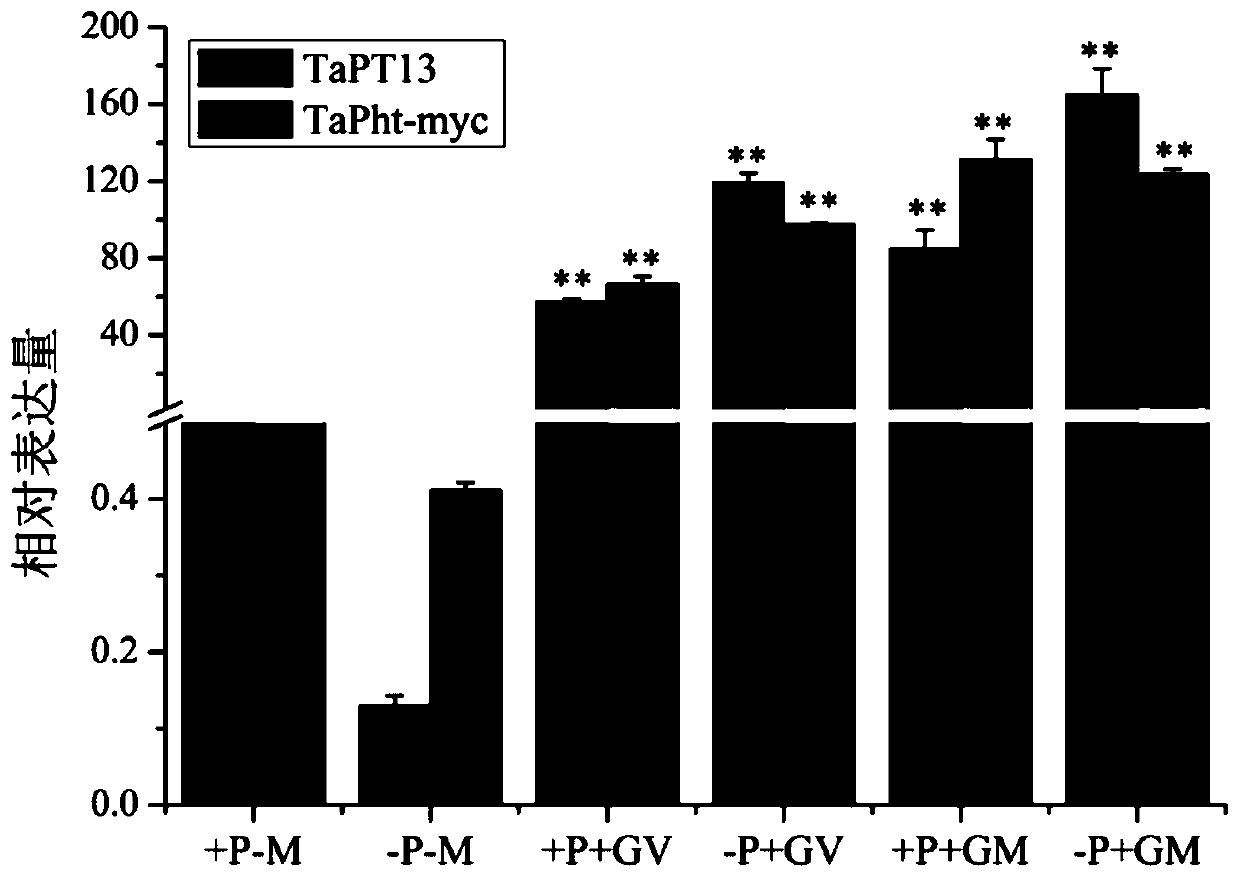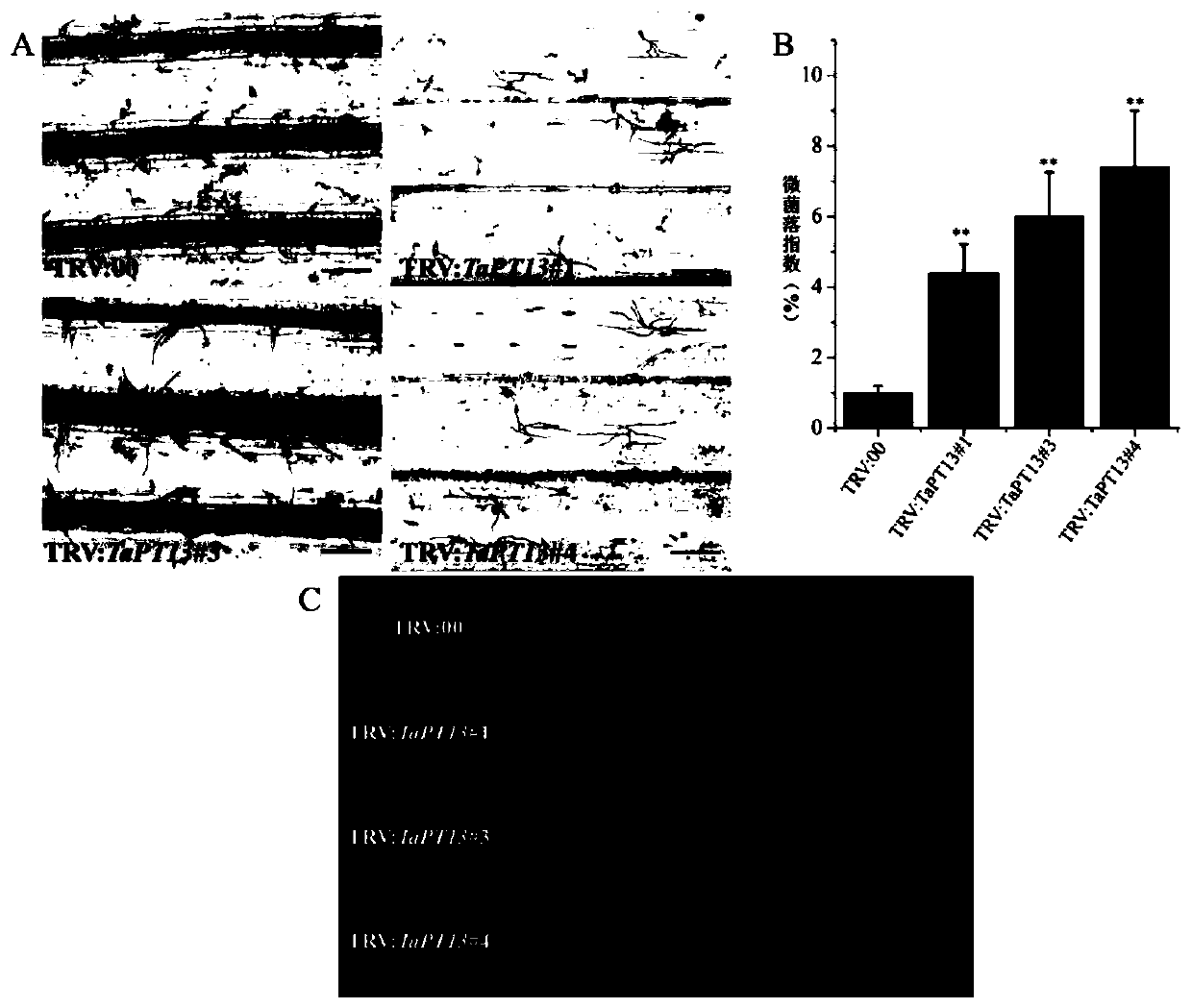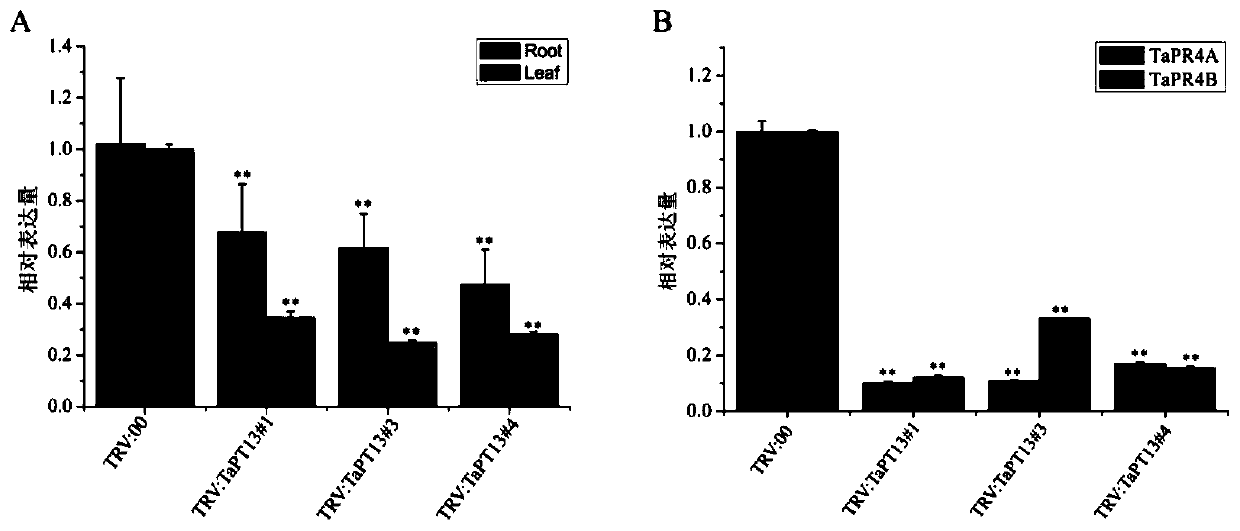Application of gene TaPT13 in improving resistance of plants to powdery mildew
A gene and plant technology, applied in botany equipment and methods, applications, plant peptides, etc., to achieve the effects of improving plant disease resistance, improving powdery mildew resistance, and promoting efficient absorption
- Summary
- Abstract
- Description
- Claims
- Application Information
AI Technical Summary
Problems solved by technology
Method used
Image
Examples
Embodiment 1
[0024] 1.1 Mycorrhiza and low phosphorus treatment
[0025] The three-leaf stage wheat was transplanted into a culture medium with a 1:1:1 ratio of fine sand, vermiculite and perlite with two mycorrhizas of G. moses and G. terrestrial. The mycorrhizal inoculation amount was 200 Spores / 15g. Grow in a light incubator with a photoperiod of 16h / 8h and a temperature of 18℃ / 15℃. All inoculated and control plants are watered twice a week with 1 / 2 Hoagland nutrient solution, 5μM KH 2 PO 4 Low phosphorus treatment, 500μM KH 2 PO 4 After high-phosphorus treatment, take the wheat roots after 6 weeks, wash them with water, harvest root samples, and store them at -80°C after quick freezing in liquid nitrogen.
[0026] The mycorrhiza, low-phosphorus and high-phosphorus samples were used to extract total RNA using TRIzol Reagent (invitrogen).
[0027] Using 1 µg total RNA as a template, the first strand cDNA was synthesized using a cDNA synthesis kit, and the extracted RNA was reverse transcribed ...
Embodiment 2
[0034] Example 2 TRV virus-mediated functional analysis of TaPT13-VIGS plant
[0035] Using the full-length TaPT13 gene as a template, according to the characteristics of the TRV virus vector pYL156, the EcoR I and BamH I sites were selected to construct pYL156, and the recombinant vector pYL156-TaPT13 and empty pYL156 were transformed into Agrobacterium GV3101 (negative control) , Use the newly germinated wheat seeds to extract and transform TRV vector to realize the silence of the whole wheat.
[0036] Take the leaves of TaPT13-VIGS and control plants grown for 16 days and place them on a 1% agar plate supplemented with 85μM benzimidazole. Place the plates in a climate incubator at 20°C and incubate for 4 hours, and then use the shake-off method to obtain an appropriate density (About 250 conidia / cm 2 ) Gently shake the fresh conidia of powdery mildew to inoculate the leaves, and sample for 60h and 7d. After the leaves of TaPT13-VIGS and control plants were cultured in a climate...
Embodiment 3
[0048] Example 3 Functional analysis of overexpression of TaPT13 in Arabidopsis
[0049] In order to further analyze the function of TaPT13, the full length of TaPT13 was cloned and constructed into the plant vector CTAPi-GW-3HA which was started by 35S promoter, and the overexpression recombinant vector CTAPi-GW-3HA-TaPT13 was obtained. The recombinant vector and the empty vector were passed through The heat shock method was used to transform Agrobacterium GV3101, and the recombinant vector and empty vector were transformed into Colombian ecotype (Col-0) Arabidopsis thaliana by the method of dipping flowers. After screening, 7 single-copy homozygous transgenic lines were obtained. The roots of Arabidopsis and transgenic plants were simultaneously inoculated with Arabidopsis powdery mildew.
[0050] The results showed that, compared with the wild-type and the transgenic plants transformed with the empty vector, the seven transgenic lines overexpressing TaPT13 were significantly mor...
PUM
 Login to View More
Login to View More Abstract
Description
Claims
Application Information
 Login to View More
Login to View More - R&D
- Intellectual Property
- Life Sciences
- Materials
- Tech Scout
- Unparalleled Data Quality
- Higher Quality Content
- 60% Fewer Hallucinations
Browse by: Latest US Patents, China's latest patents, Technical Efficacy Thesaurus, Application Domain, Technology Topic, Popular Technical Reports.
© 2025 PatSnap. All rights reserved.Legal|Privacy policy|Modern Slavery Act Transparency Statement|Sitemap|About US| Contact US: help@patsnap.com



